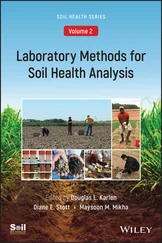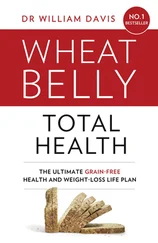65 Williams, A., Kane, D.A., Ewing, P.M., Atwood, L.W., Jilling, A., Li, M., Lou, Y., Davis, A.S., Grandy, A.S., Huedi, S.C., Hunter, M.C., Koide, R.T., Mortensen, D.A., Smith, R.G., Snapp, S.S., Spokas, K.A., Yannarell, A.C., and Jordan, N.R. (2016). Soil functional zone management: A vehicle for enhancing production and soil ecosystem services in row‐crop agroecosystems. Front. Plant Sci. 7, 1–65. doi:10.3389/fpls.2016.00065
66 Wolde, B. Lal, P., Alavaapati, J., Burli, P., and Iranah, P. (2016). Soil and water conservation using the socioeconomics, sustainability concerns, and policy preference for residual biomass harvest. J. Soil Water Conserv. 71(6):476–483. doi:10.2489/jswc.71.6.476
4 Metadata: An Essential Component for Interpreting Soil Health Measurements
Jane M.‐F. Johnson and Maysoon M. Mikha
Soil health, also called soil quality, has both inherent edaphic components and dynamic properties, which interact with management and climatic affects (Karlen, Ditzler, & Andrews, 2003). Inherent soil characterization has been an integral part of potential land use assessments for decades. In contrast, the concept of soil health has evolved with a primary focus on agronomic productivity but including effects on plant nutrition and ultimately the effects on human health (Robinson et al., 2017).
Discussions of soil assessment often focus on the suitability of indicators or attribute data but fail to adequately address the metadata (Bünemann et al., 2018). Attribute data reflects the anticipated or actual response to management practices and are related to indices of soil health (Askari & Holden, 2015). However, metadata provides the information needed to establish a context for accurately interpreting indicator data, thereby facilitating synthesis and integration of experimental results across time and/or space.
Soil health or perhaps even more importantly changes in soil properties (i.e., measured attribute data) that describe soil health inherently require a geospatial and temporal context. Spatial components include the site description, topographical data, and inherent soil parameters. Temporal data describe when the data were collected. This is important because granularity of temporal measurements differ at vastly different scales ranging from nearly instantaneous to seasonal or even yearly depending on the parameter being evaluated. Metadata should also include a wide range of edaphic parameters.
Furthermore, an excellent example of both the importance and use of metadata can be found by examining the USDA–ARS Greenhouse Reduction through Agricultural Enhancement network (GRACEnet) protocols. GRACEnet was developed to answer questions related to agricultural soil C stocks in the context of greenhouse gas mitigation (Del Grosso et al., 2013; Jawson, Shafer, Franzluebbers, Parkin, & Follett, 2005; Liebig, Franzluebbers, & Follett, 2012, p. 547). When organizing this large, complex, multisite project, empirical data collectors, data users, data synthesizer, and modelers worked together to identify the metadata they considered necessary to interpret and model the attribute data. The output of GRACEnet organization meetings established a set of metadata and indicator (measurement) data that can be used to assess the impact of management on soil organic C (SOC). The linkage between SOC and soil health through metadata was first emphasized by Doran (2002), because it is the metadata that can help to logically interpret SOC changes and their effect on soil health.
The GRACEnet effort developed a data entry template (DET) to assist in collating meta and attribute data from multiple users (Del Grosso et al., 2013). The DET has been modified to meet a range of experimental purposes (Delgado et al., 2016; Del Grosso et al., 2013; Liebig et al., 2016) but recommends the characterization or metadata collected that has to be conserved: site description, soil characterization, management, climate, and sampling and analysis methods ( Table 4.1). The DET thus provides a prime example of the metadata needed to adequately interpret soil parameters when striving to describe or assess soil health.
Methods and Frequency
Site Description
Site description includes high‐level information needed to understand whether soil properties and processes are static or change slowly (Liebig, Varvel, & Honeycutt, 2010) at a given site. This includes location, soil characteristics, experimental objectives and design, and climatic and weather data.
Location may be described using latitude, longitude, and elevation and may include a city, state, and country reference and topographic descriptors. Other site descriptive data that can be useful are the Major Land use Resource Area maintained by the U.S. Department of the Interior ( https://catalog.data.gov/dataset/major‐land‐resource‐areas‐mlra), native vegetation, cropping or land use history, and noting if the site is naturally or artificially drained and if the site receives supplemental irrigation. Soil morphological and developmental forces such as glaciation, alluviation, or sedimentation are also useful as these impact inherent soil properties.
Table 4.1 Metadata related to temporal and spatial properties of soil health.
| Site description |
| Location |
Soil characterization |
Experimental descriptors |
Climatic data |
Weather |
| City, state, country |
soil taxonomic description |
experimental design |
mean annual temperature |
nearest weather station location |
| Latitude, longitude, and elevation |
soil taxonomy system a |
number of replications or blocks |
mean annual precipitation |
|
| Topography (e.g., flat, rolling hills, glacial moraine), slope % |
soil type |
site size |
characteristic climate descriptor (e.g., temperate moist) |
|
| Major Land Resource Area a |
soil texture |
plot size |
|
|
| Native vegetation |
bulk density |
treatments |
|
|
| Drainage |
pH |
study duration (or start/end dates) |
|
|
|
soil C, N, P, and K |
|
|
|
| Rainfed or irrigated |
water‐holding capacity |
|
|
|
| Management |
| Tillage |
Crop system |
Agricultural amendments |
Crop management |
Livestock |
| Type |
crop(s) |
type |
method |
animal species |
| Depth |
crop rotation |
active ingredient |
residue management |
animal class |
| Frequency |
cropping history |
rate |
planting data (crop, cultivar) date, rate, depth, method, row spacing, cultivar) |
stocking rate |
| Date |
cover crop |
purpose |
cover crop management (crop, cultivar, date, rate, depth, method, row spacing, termination method and date, biomass) |
grazing duration |
| Organic yes/no |
|
application method |
yield |
|
|
|
date |
biomass return rate |
|
| Sampling |
| What |
When |
Where |
How |
Analysis |
| plant, soil, air |
date |
slope position |
sample preparation |
sampling method |
|
time of day |
relative to vegetation |
sample storage |
brief description or detailed if new or novel |
|
if applicable plant growth stage |
depth |
|
citation |
|
|
GPS coordinates |
|
|
a https://catalog.data.gov/dataset/major‐land‐resource‐areas‐mlra.
Читать дальше












